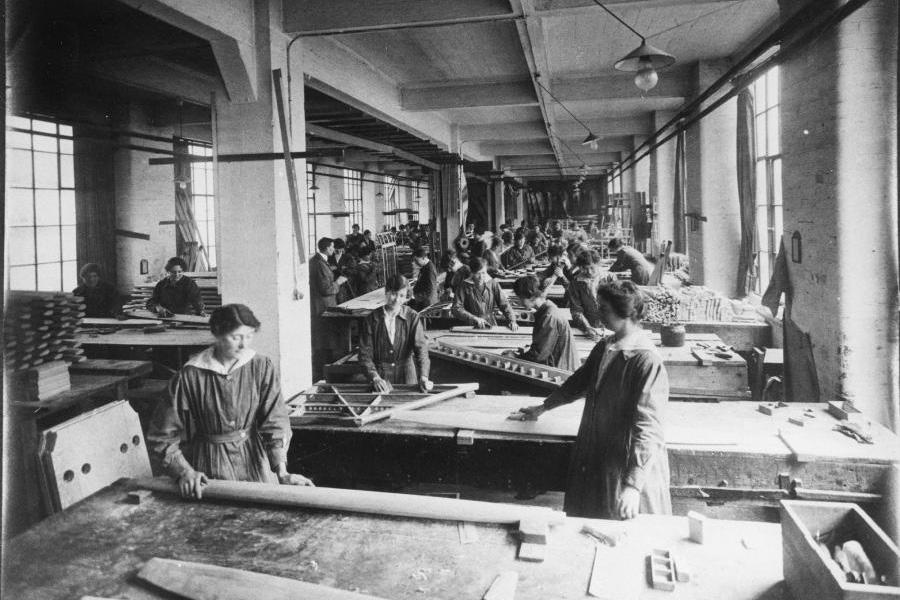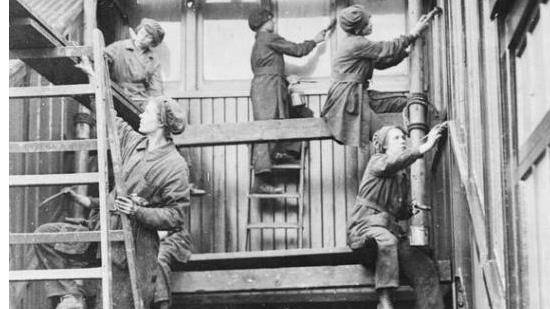
During the First World War, women on the home front in Hammersmith & Fulham played a vital role in the war effort and, in the process, took significant steps along the road to equality.
Huge demand for high-explosive shells, weapons and the latest novelty, aircraft, towards the end of the war meant that by 1918 the munitions factories were the single largest employer of women.
Day and night shifts ran continuously in two major munitions works in White City, and an aircraft manufacturer in Hammersmith.
Working round the clock in Cambridge Grove, Hammersmith, women produced wing sections of the Airco DH-9, a single-engined bomber biplane which was used during the final year of the First World War.
They worked at the Waring & Gillow factory, which until then had only been known for producing furniture.
Twenty years later, the factory was again transformed for military use and churned out parts for the wooden Mosquito aircraft and for gliders to deliver airborne troops to battlefields in mainland Europe during the Second World War.
Women were trained for manufacturing jobs which had, until then, been the exclusive domain of men.

During the 1914-18 war they also carried out other vital roles, as nurses, posties, cooks, railway conductors and ticket collectors, bank tellers, civil servants and farmworkers.
Waring & Gillow also had a White City factory during the First World War, making tents and trench covers. After the war the business name was changed to Alliance Aeroplane Ltd, and eventually aircraft parts production ended.
Tragedy strikes
During the First World War, White City was also the home of the WE Blake Explosive Loading Company's munitions factory.
On 31 October 1918, a fire in the bomb-making area of the Wood Lane factory claimed the lives of 13 workers - 11 of them women.
Tragically, in the euphoria that followed the end of hostilities less than a fortnight later, the huge loss of life went largely unreported as newspaper readers clamoured for good news.
The 13 were buried in one grave, with military honours, at the Margravine cemetery near Barons Court where a Cornish granite memorial was put up at a later ceremony.

Four of the women were from Hammersmith and Shepherds Bush.
The dead were:
- Ethel Bullock, 35
- Rose Brookes, 34
- Amy Fern, 46
- Lydia Guilder, 25
- Mary Graves, 26
- Eleanor Lee, 21
- Isobel Maguire, 25
- Florence Marrisby, 39
- William Newton, 64
- Emily Pratt, 37
- Mary Rumball, 31
- William Stanley, 42
- Ellen Woolgar, 41.